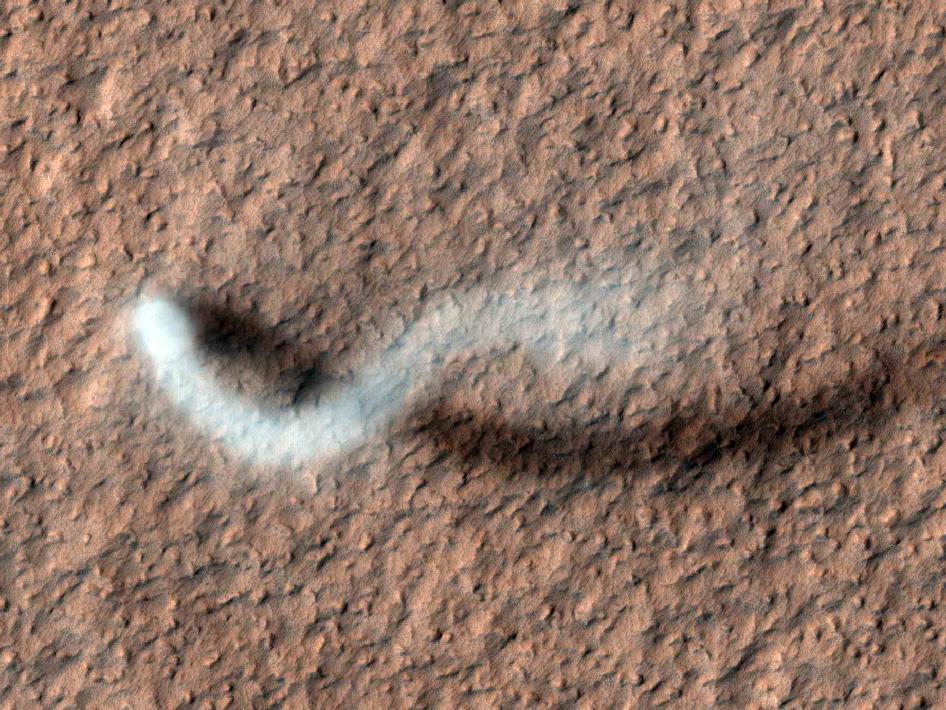Twister on Mars Captured in Amazing NASA Photo

A dust devil on Mars has been caught in the act of tearing across the Red Planet in a spectacular new photo by a NASA spacecraft.
The Martian twister rises up on a huge column of dust more than half a mile (800 meters) high in the new image, which was captured by NASA's Mars Reconnaissance Orbiter on Feb. 16 as the spacecraft passed over the Amazonis Planitia region of northern Mars.
The 100-foot-wide (30-m) dust devil curves slightly, pushed by a westerly breeze. Tracks from previous whirlwinds are also visible in the Mars twister picture, showing up as streaks on the Red Planet's surface. The dust devil's shadow can also clearly be seen in the photo.
Dust devils occur on both Earth and Mars. They are spinning columns of air, made visible by the dirt they suck up off the ground.
Unlike tornados, dust devils usually form on clear days when the ground soaks up a lot of heat from the sun. If conditions are right, heated air near the surface may begin to rotate as it rises through small pockets of cooler air just above it, NASA researchers explained in a statement.
Just as on Earth, Martian winds are powered by solar heating. Although Mars is now near aphelion — the time of Martian year when the Red Planet is farthest from the sun — it still receives enough solar energy to drive dust devils across its surface.
NASA's Mars Reconnaissance Orbiter has been examining Mars with six science instruments since arriving at the Red Planet in March 2006. The spacecraft continues to provide valuable insights into the planet's ancient environment and how processes such as wind, meteorite impacts and seasonal frosts still affect the surface of Mars today, NASA officials said.
Breaking space news, the latest updates on rocket launches, skywatching events and more!
NASA launched the Mars Reconnaissance Orbiter in September 2005. The $720 million mission is NASA's youngest Mars orbiter flight to date, but has beamed more data to Earth than all other interplanetary missions combined.
Follow SPACE.com for the latest in space science and exploration news on Twitter @Spacedotcom and on Facebook.

Space.com is the premier source of space exploration, innovation and astronomy news, chronicling (and celebrating) humanity's ongoing expansion across the final frontier. Originally founded in 1999, Space.com is, and always has been, the passion of writers and editors who are space fans and also trained journalists. Our current news team consists of Editor-in-Chief Tariq Malik; Editor Hanneke Weitering, Senior Space Writer Mike Wall; Senior Writer Meghan Bartels; Senior Writer Chelsea Gohd, Senior Writer Tereza Pultarova and Staff Writer Alexander Cox, focusing on e-commerce. Senior Producer Steve Spaleta oversees our space videos, with Diana Whitcroft as our Social Media Editor.
